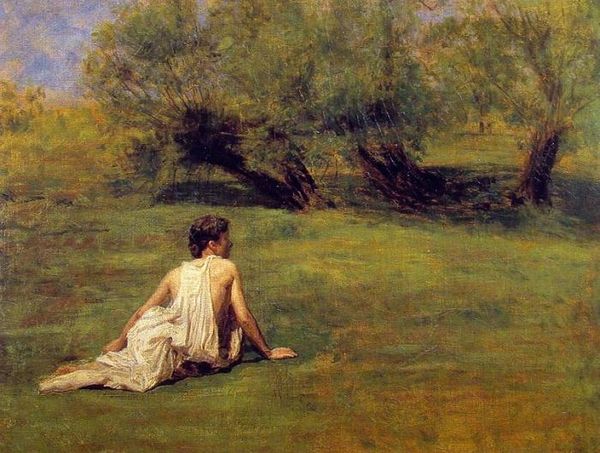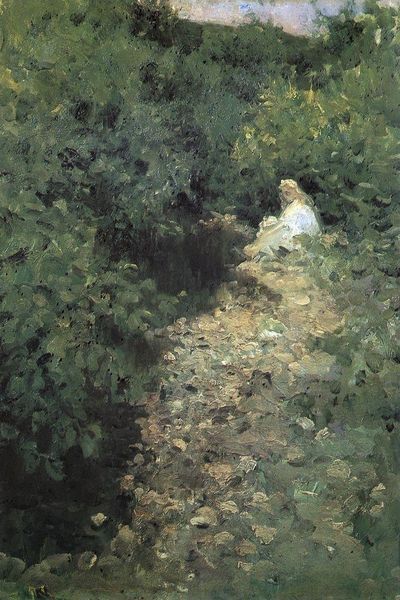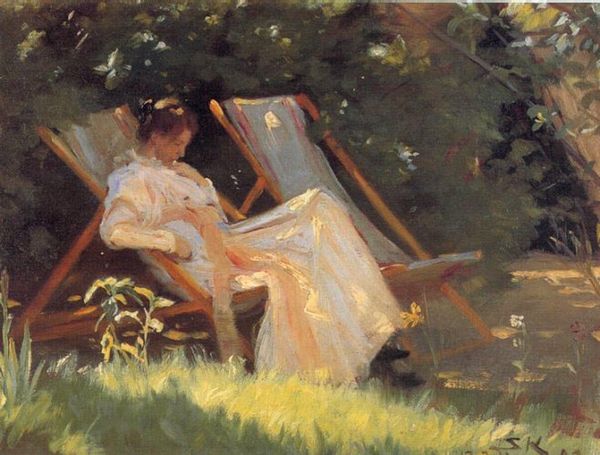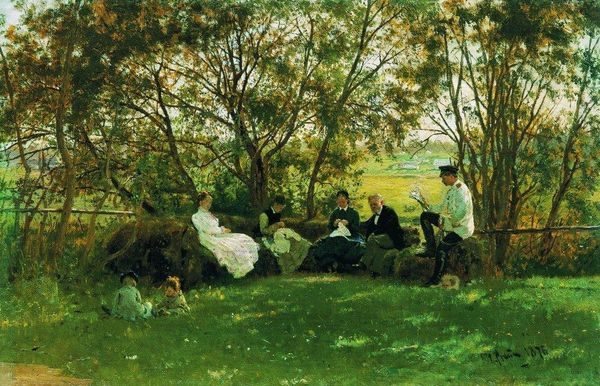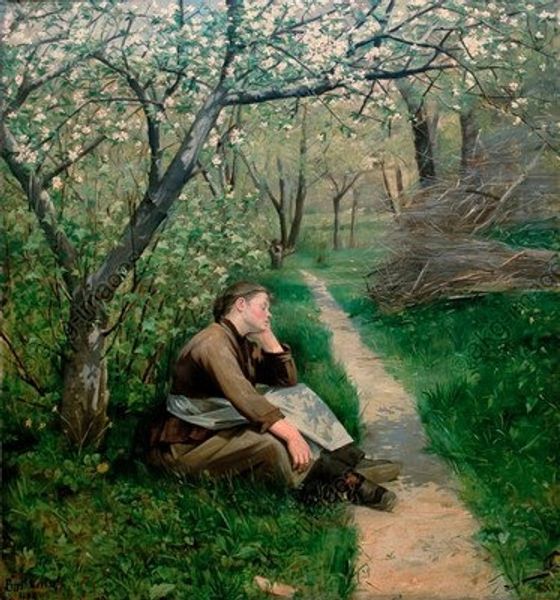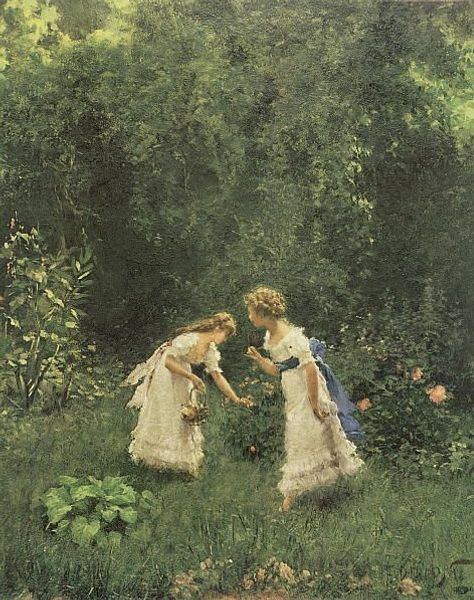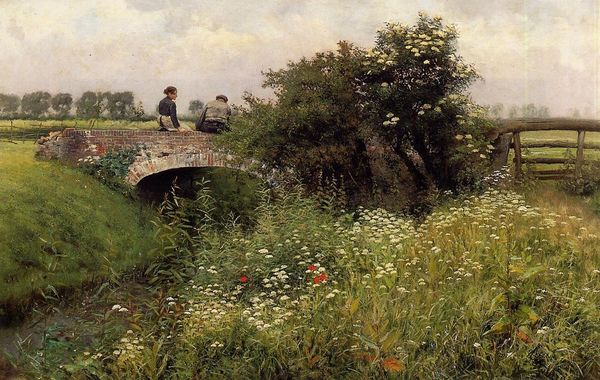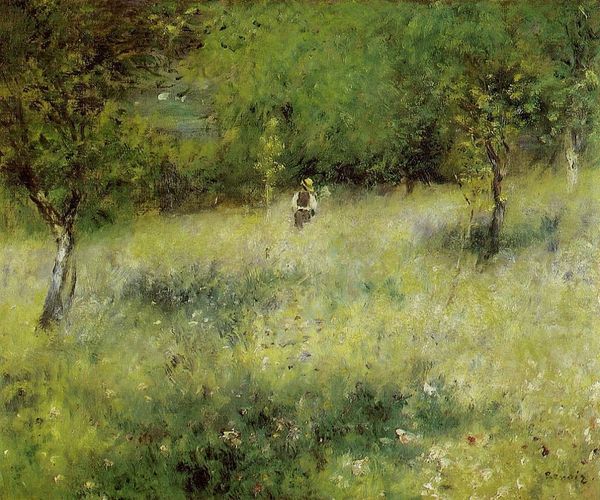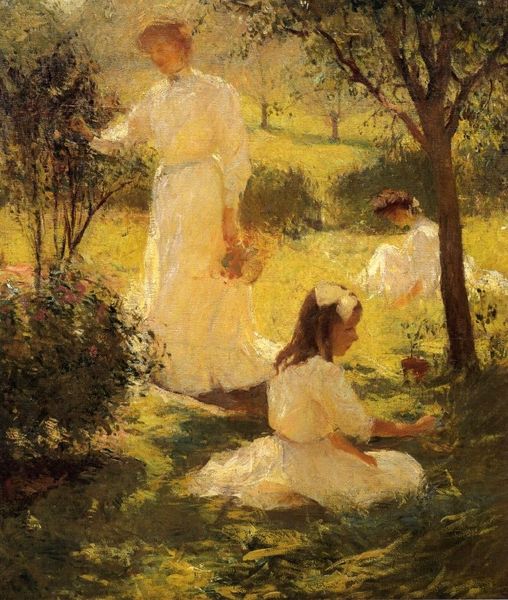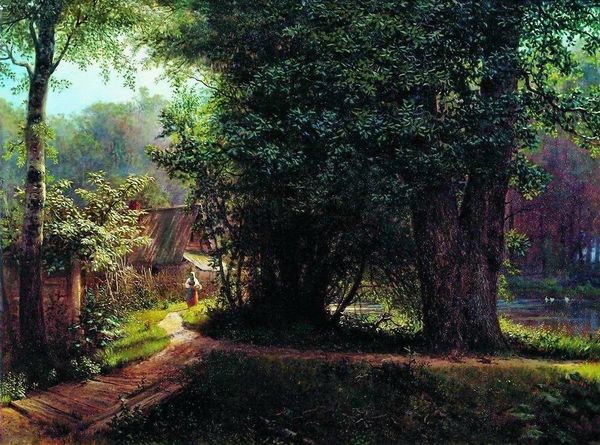
painting, plein-air, oil-paint
#
portrait
#
painting
#
impressionism
#
plein-air
#
oil-paint
#
landscape
#
genre-painting
#
impressionist inspired
Copyright: Public domain
Curator: Welcome. Today, we’re looking at “Summer,” a painting by Albert Edelfelt. The scene evokes a quintessential sense of pastoral leisure. Editor: My first impression is of calm—a muted, tranquil scene. The figures are small and a bit blurred by the landscape, dominated by lush green hues. Curator: The texture of the canvas and Edelfelt's handling of paint, especially visible in the woman's dress and the dappled light through the leaves, are crucial to note. The brushstrokes themselves convey a sense of fleeting summer light. We see here an approach linked to plein-air painting, but one with specific social contexts of class and labor. Editor: Absolutely, we must consider that this idyllic vision omits the labor of maintaining these manicured lawns. While Edelfelt captures the appearance of leisure, the absence of working figures begs a conversation about the unseen labour inherent to sustaining the upper class’s recreational activities. Where are the gardeners, the domestic staff? Their absence speaks volumes. Curator: Indeed. The materials used—oil paint applied with varied impasto—were commercially produced, making art creation somewhat more accessible than in earlier periods. The very act of representing this particular class required labor, resources and infrastructure from outside this picture frame. How would that then impact the work's reception by varying audiences? Editor: Good question. The woman is deliberately removed from labor, visually set apart by her fine clothing and pensive gaze. This is a performance, but to what extent does the artist critique or uphold this social division? Edelfelt might be reflecting or even celebrating a moment in the sun before rapid urbanization alters Finland’s social fabric. Is the light that shimmers across the green fields a moment of quiet or of ignorance? Curator: Interesting question. Reflecting on the artwork’s positionality through social context deepens its appreciation beyond its pure aesthetic enjoyment. By carefully analysing materials, we illuminate its economic realities and wider production networks. Editor: Yes, exactly! The painting isn't just a window but also a mirror—reflecting both the values and the tensions of its era. Curator: Very true. This exploration only scratches the surface, but hopefully it underscores the layers embedded within. Editor: Agreed. Edelfelt’s "Summer" beckons to look more closely at the complex relations surrounding production and representation.
Comments
No comments
Be the first to comment and join the conversation on the ultimate creative platform.

